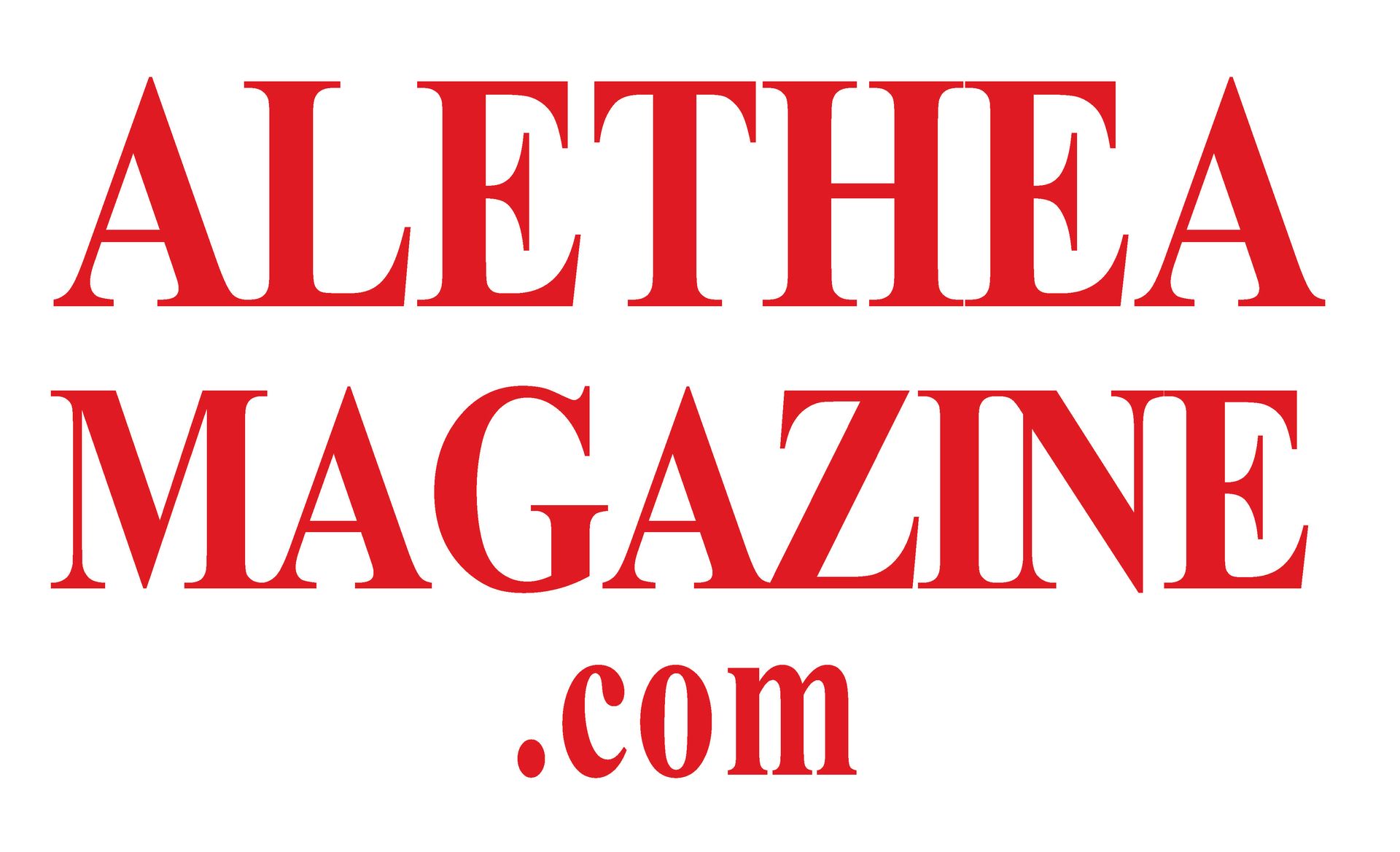Art & Environment - 6 March 2022 - by C. Mauer
Ingrid Weyland's "Topographies of Fragility"
@ingridwey
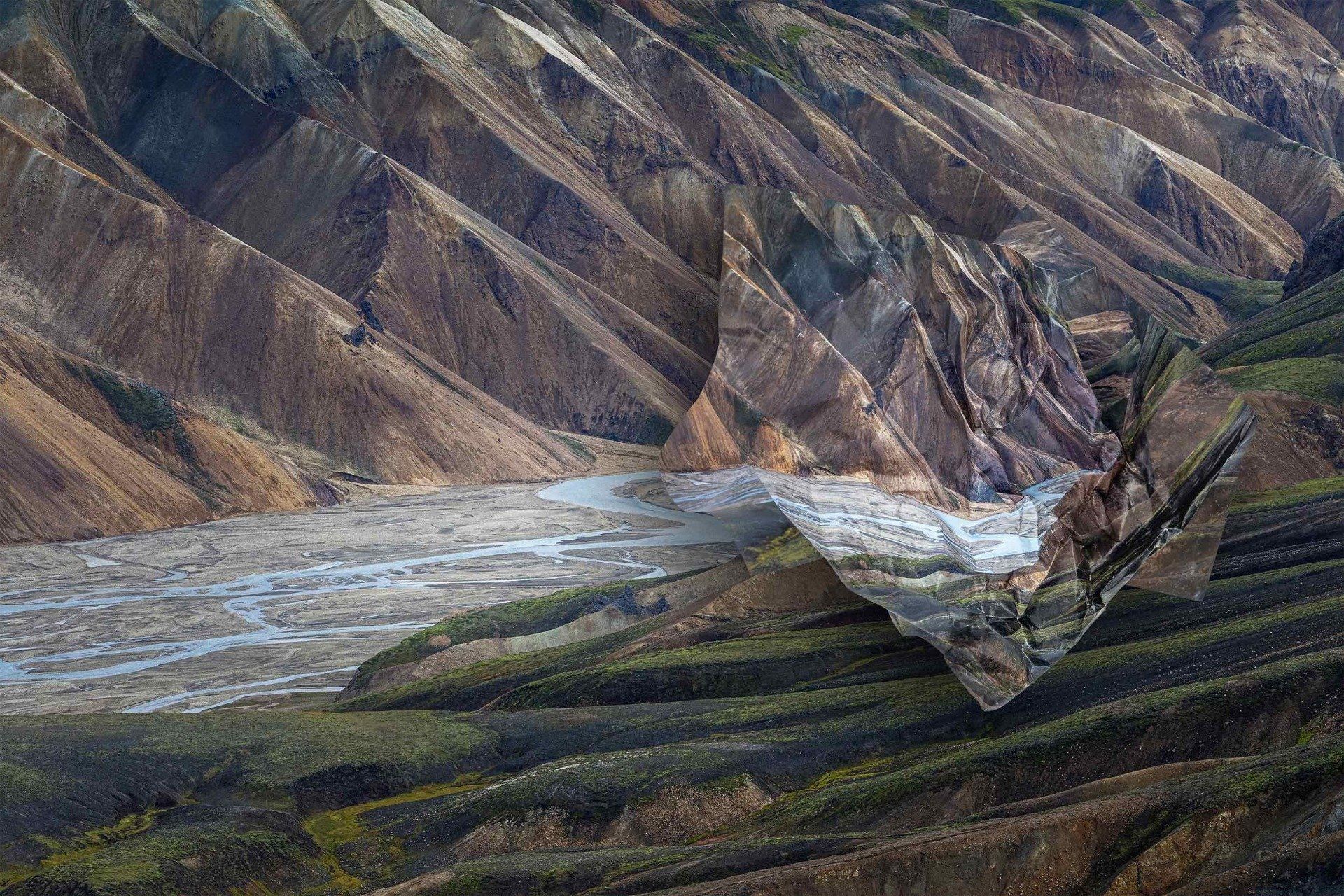
Topographies of Fragility II
©Ingrid Weyland
Ingrid Weyland is an emerging Argentine multi-award winning artist who has a deep connection with nature and has discovered entirely new artistic approaches to art as an instrument of environmental protection. She was born in Buenos Aires and grew up in a creative family of a sculptor and architect. Later she studied graphic design at UBA and worked for several years in her own studio.
Originally Ingrid Weyland was a portrait photographer until she felt that her love for nature was growing stronger. She began working as a landscape photographer, traveling extensively from southern Argentina to the Greenland Ice Sheet to photograph. In the process, she realized that it was not enough for her to simply show the beautiful landscapes, but that she had to find a way to show the beauty and, at the same time, the decay caused by the influence of humans.
In her latest project, "Topographies of Fragility," she manipulates and distorts the seemingly perfect landscapes that she herself has traveled and whose environmental destruction by humans has begun. This process with photographic paper allows her to explore the contradictory relationship between man and nature. In her first attempts, she realized that the fragility of the paper is a poetic allusion to man's relationship with the planet.
In the images of the landscapes, her technique reveals the impending decay and becomes a wake-up call for the viewer to question their relationship with the natural world. Currently, the artist is experimenting with other artistic ways to show the fragility of nature.
Ingrid Weyland is convinced that art can emotionalize society and also the government to take commitment for climate protection. An interview.

Topographies of Fragility VI
©Ingrid Weyland
Iceland - literally like visiting another planet
Alethea & Art Magazine: Did you already touch on environmental issues with your art from the beginning or did this come later?
Ingrid Weyland: Initially, I was mostly a portrait photographer, although nature was always present in one way or another in my work. Nature is, and has always been, my “safe place’. Some years later, I was given the opportunity to travel from the south of Argentina to Greenland's ice sheet, in search of landscapes with a particular mood and beauty. These are unspoiled landscapes, almost surreal, where the immensity of the land reveals itself; I found myself forging an intimate connection with these surroundings.
Iceland, with its intensity and abundance of color in its lava fields, glaciers, fjords and mountain peaks, has struck me as one of the most majestic places to photograph. It’s literally like visiting another planet. It makes me think of a pre-human era, a time of virgin untouched nature.
On my third trip to Iceland I was overwhelmed by the changes that had taken place since my first visit in 2015. It had become a tourist hotspot, and I noticed with sadness how people failed to stick to regulations, not respecting boundaries, and it had started to show on the landscape.
This exact moment marked my urgency to inspire change, and I sensed that simply showing beautiful landscapes was not enough, I wanted to find a way of conveying both beauty and decay at the same time. I wanted my work to remind people of the impact they have and to make them stop and think about what we stand to lose because of climate change.

Topographies of Fragility XXIV
©Ingrid Weyland
Art as a strong advocate for climate engagement for both society and governments
Alethea & Art Magazine: Do you think that environmental artists can achieve more attention for these issues with their work than political activists?
Ingrid Weyland: I think each one of us can play a part, contributing from our own standing point. Mine happens to be art, so in my role as a photographer I create images with a visual impact that encourages the viewer to look twice at the scene before their eyes and consider the impact of mankind on the environment.
I believe that art, and its emotional impact, can be a strong advocate for climate engagement for both society and governments.
Since I first started working on this series, I have been pleasantly surprised to read comments from people who have written to tell me how my images made them stop and think, and that they stuck in their minds afterwards. A couple of professors have written saying that they were inspired after seeing my work to put the method into practice in their classes: their students took sheets of paper and scrunched them up before trying to flatten them back again, observing how the lines remain and the folds cannot be undone. I found this very moving.
Ultimately, my goal is to incite a sense of self-reflection and encourage fellow humans to envisage a world in harmony with nature and understand that we are all connected, nature and humans, together.
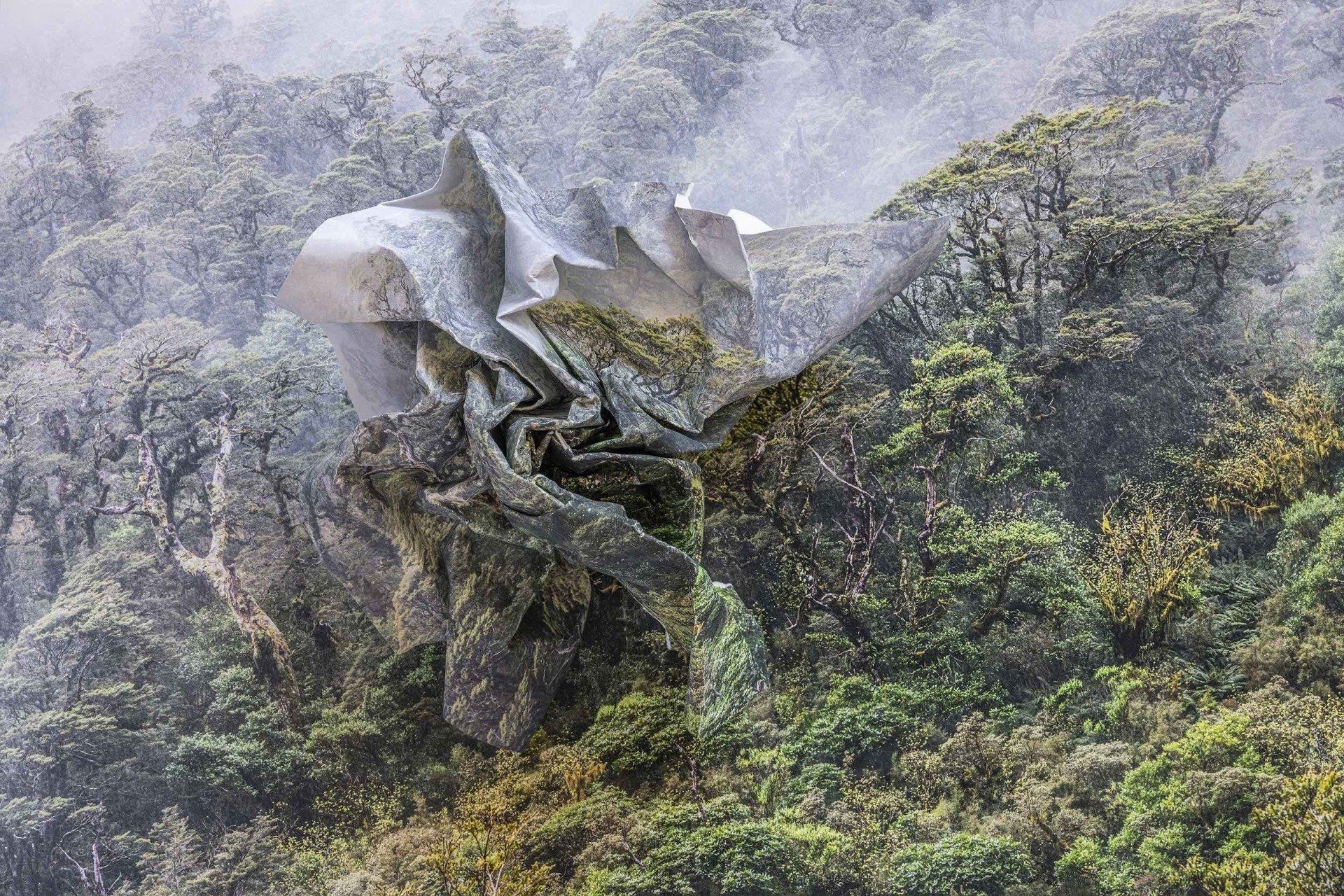
Topographies of Fragility V
©Ingrid Weyland
Alethea & Art Magazine: Can you relate a particularly emotional experience from your art?
Ingrid Weyland: When I arrive in a new place, I generally take some time before I start shooting to connect with the environment and become familiar with my surroundings.
On one of my trips to Iceland, which is a place where you feel even magic could be possible, I was all alone, walking through a green valley and along a crystal-clear river, and I stood over a small rock and started shooting. I completely lost track of time, I entered a trance-like state, it was a dreamlike atmosphere, the world around me vanished. What felt like a few hours later, I suddenly and abruptly “woke up”. I do not know what happened to me or what I did during that period of time, I only know I had never felt that sense of calmness, wellbeing, and communion with nature before.
About forest fires
Alethea & Art Magazine: What is your current project?
Ingrid Weyland: Currently, I am working on new experiments based on materiality and its sculptural quality. This allows me to continue thinking about the environment. I have incorporated new processes and actions in my photographic archive: embroidery, sewing, tearing, burning, and sometimes reconstructing or reinventing my own landscapes.
Burning is especially impactful given the growing issue of forest fires due to climate change. I am also experimenting with 3D crumpled images on top of my "untouched" landscapes. Rather than photographing the crumpled image to create a final flat image, I am working with the "crumpled worlds" as individual sculptures.
Alethea & Art Magazine:
What are your plans for your career?
Ingrid Weyland: I am not much of a planner, I tend to experience life as it comes, and try to enjoy or accept things as they are. Everything that has happened to me and my work over the last two years has been a blessing and I’m extremely grateful for it. I would very much like to continue working and have time to keep learning about our role in this planet and what we can still do to try to change an outcome that seems inevitable. I hope I can make a stronger impact. For me learning is essential.
After these years of lockdown, I hope I can be able to start traveling again so that I can continue to create and share my work, and most importantly the message it carries, with people across the world.
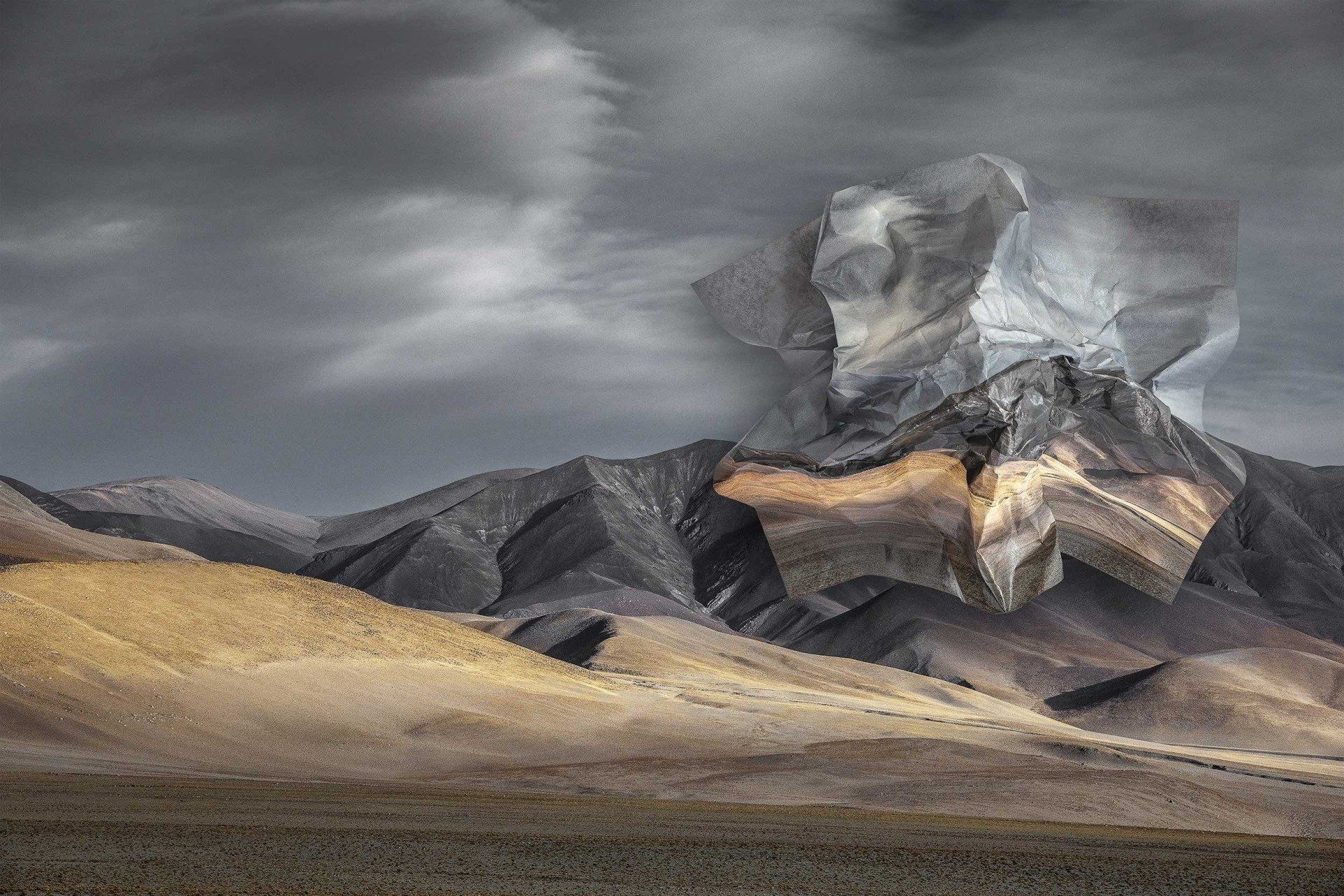
Topographies of Fragility IV
©Ingrid Weyland
Alethea & Art Magazine: What environmental issue would you still like to tackle?
Ingrid Weyland: My current work doesn’t focus on specific local environmental issues, but rather serves as a metaphor for the fragility of nature, as well as the fragility of humanity itself.
Forests burning, Arctic ice melting and rising temperatures are issues that grab my attention. We have recently been having wildfires in the north and south of Argentina, where hundreds of thousands of hectares have been burned, killing wildlife and decimating crops.
Patagonia and Greenland both qualify as "last frontier" territories, and this is a compelling connection for me personally. Although I have not yet visited Antarctica, which has been my dream for the last years, the Arctic and Antarctic areas play key roles in the future of climate change, as they both help keep our planet’s climate in balance.
I have always been drawn to cold and icy places. I am drawn to landscapes that generate a feeling of emptiness. Strangely, this emptiness is fulfilling for me.
Alethea & Art Magazine: You come from a family of artists. How much did your parents' work inspire you?
Ingrid Weyland: I lived with my grandparents for many years, in a house filled with coloring pencils, drawing paper, blueprints, inks, and clay. Despite a legacy of sculpture and architecture, and my own academic studies being in Graphic Design, my current project has most to do with my evolution as a photographer.
I do, however, believe that I am a melting pot of many different inspirations and that they come to the light in different ways. For example, I am increasingly interested in the concept of “Expanded Photography”, where photography merges with other areas of the visual arts, such as collage or different types of manual interventions. Pure photography is not enough to translate my experiences and concerns, so I decided to try new ways of expression; I love to experiment and defy the limits of photography, as well as my own limits.
Alethea & Art Magazine: In which galleries and museums and places can you find your work?
Ingrid Weyland: I have a few images on show at the York Art Gallery, UK, in June, as I have been shortlisted for the Aesthetica Art Prize. Plus there is a possibility that I will be part of a group exhibition in a local art gallery in Buenos Aireswith Amhaus Art Studio, @amhaus.art, with an innovative interactive and multidisciplinary proposal that appeals to the sensory impact of those who experience it, calling attention to the performative,
as well as a solo exhibit at the end of the year, also in Buenos Aires.
I've also recently signed with a gallery in New York, and an announcement about that will be made soon. I would be very honored to become part of a museum’s collection, but that has not yet happened.
I hope in the future that more and more galleries will focus their collections on engaging viewers to consider their own relationship with the environment.
@ingridwey
Alethea & Art Magazine: Dear Ingrid, thank you very much for the interview.
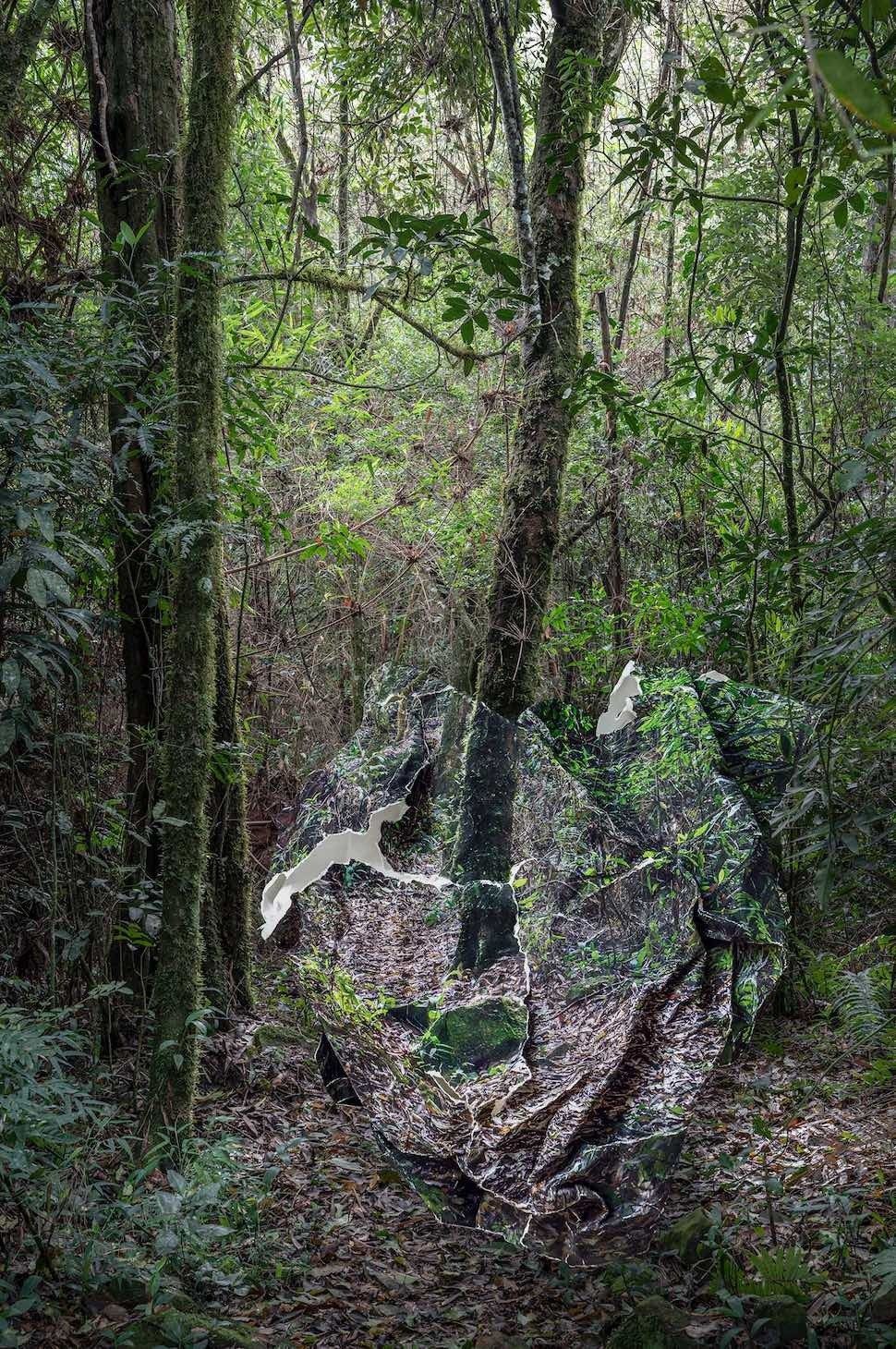
Topographies of Fragility XXVIII
©Ingrid Weyland
Discover more about the artist Ingrid Weyland
@ingridwey
Prizes/Awards
2022 | Shortlisted for the Aesthetica Art Prize
2022 | Lens Culture Art Photography Awards 2022, Juror’s Pick
2021 | Ashurst Emerging Artist Photography Prize Winner
2021 Rhonda Wilson Award Winner
2021 Lens Culture Critics Choice 2021 Finalist
2021 | 1854 British Journal of Photography, Decade of Change Finalist
2021 | Loosenart Environmental Alterations, Finalist
2021 Discovery Awards, Encontros da Imagen Festival Internacional de Fotografia e Artes Visuais, Braga, Finalist
2021 | Life Framer Open Call Finalist
2021 | Exposure Photo Festival International Open Call Finalist
2021 | Julia Margaret Cameron Awards, Two Honourable Mentions in Fine Art and Digital Manipulation
